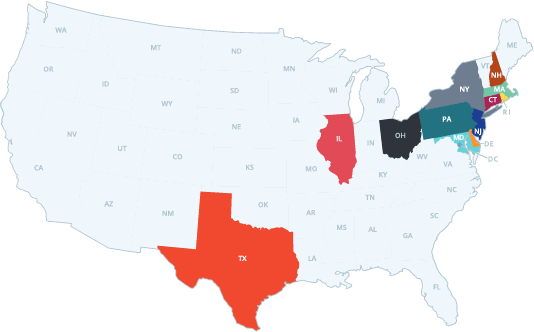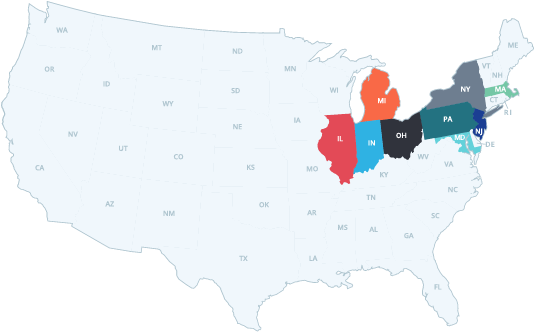Fall Maintenance Tips Inside and Outside Your Home
The onset of autumn means more than a respite from summer heat and changing colors on the leaves. Fall is also prime time to take care of seasonal maintenance around your home, indoor and out, to prepare the house and yard for winter's arrival. Check out the following fall maintenance tips for the interior and exterior of your home to ensure that you are ready for the changing seasons.

Fall Maintenance Tips for Your Home's Interior
Inside your home, your biggest priority in the fall will be ensuring that your furnace is ready to safely heat the house, and that you aren't allowing any of that hot air to leak outside. Aside from the HVAC system, there are also other tasks to complete around the house to promote a comfortable and safe living space for the winter months.
- Have your HVAC system inspected: You'll need your heating, ventilation, and air conditioning (HVAC) system during the winter months — particularly in northern climates — so it's important you get it inspected during the fall by a professional HVAC contractor. The technician will be able to test the system's heat output as well as monitor for harmful levels of carbon monoxide.
- Prioritize regular HVAC cleaning: Once the furnace has been inspected, homeowners can turn their focus to the system's output by making sure ducts and vents are properly wiped clean and cleared of dust or dander. You should also change your air filter according to the manufacturer's recommendations, which typically means every one to three months.
- Check interior window sills: A fully functioning HVAC system is all for naught if heat is permitted to escape through openings in the windows. Inspect the windows in your homes and look for cracks in the glass or sill itself, which may allow warm air to escape. In more northern climates, you can put plastic wrap over the windows themselves to provide a barrier between the cold of the window and the warmth of the home, reducing the amount of heat seeping through the glass.
- Clean the fireplace: Homes with a traditional working fireplace should have it cleaned as part of their annual fall maintenance routine. Professional chimney sweeps recommend this project be done annually.
- Reverse ceiling fans: This creates an upward draft that redistributes warm air trapped against the ceiling.
- Test and/or replace batteries in all smoke and carbon monoxide detectors: Additional batteries should be purchased and kept on hand for emergencies in the months ahead.
- Vacuum air conditioners and remove window units for the season: Wrapping them in a tarp or plastic will keep them undamaged and ready for the following year.
- Establish a regular schedule for cleaning any or all of the home's humidifiers: Doing so prevents spores and bacteria from festering in the dirty water these humidifiers collect.
Fall Maintenance Tips for Your Home's Exterior
By the time fall comes around, the growing season is almost over, but your yard work to-do list is just beginning. Once the leaves start changing it's time to get your yard ready to endure a long, cold winter and come out healthier than ever in the spring. Proper attention to your yard work checklist can also protect your house itself by removing potential sources of moisture and rot from around the foundation.
- Mow your lawn one last time: Set the cutting height at two inches so the grass can store food for growth but not get so long that snow and ice will mat it down and cause problems with disease and fungus.
- Mulch grass clippings into your flower and shrub beds: This will help store water and protect shrub and perennial roots from heavy freeze damage.
- Collect the seed heads of flowers you'll want to plant in the spring: This will give you a head start on reviving a colorful and attractive flower garden the next year.
- Mulch or remove your leaves: Removing leaves from the yard prevents them from suffocating the lawn during the winter and allows the grass to come back healthier and more quickly next season. You can mulch leaves directly into the lawn to fertilize it by shredding them with a lawn mower, or collect the excess to put in a compost pile. If you don't need mulch or compost, many municipalities collect yard waste and use it for their own composting programs.
- Seed the bare spots: Grass can often establish itself more rapidly during cool fall temperatures, and avoiding the summer heat also cuts down on watering time for the new sprouts.
- Give the lawn the nutrients it needs: Fertilize your lawn using a mix that's correct for your soil and grass. Most winterizing fertilizers are designed for grass varieties in the southern part of the country and contain higher percentages of phosphorus and potassium and lower levels of nitrogen.
- Take care of your weed problems: Fall is the best time to apply herbicides to weeds since they are busy trying to store food in their roots. Kill the roots and you kill the whole plant. By carefully using weed killers in fall to take advantage of plant metabolism, you can use herbicide more efficiently. You'll use less, do less harm to the environment and save more money.
- Avoid pruning bushes or trees in the fall: The plant is going dormant and will not be able to heal in time before ice gets into the wound and causes further damage, allowing bacteria or fungus to move in.
- Inspect each nearby tree and look for signs of disease or decay: Trees near a home pose potential danger to the structure should snowfall, wind or other extreme weather cause the tree to collapse or lose limbs. Remove any dead limbs; otherwise, a winter storm could remove a branch for you and deposit it on your roof, or in a neighbor's windshield.
- In the north, set out your cold weather crops in cold frames: This applies to vegetables like lettuce and broccoli that you can continue to grow even as the temperature drops. If you don't have a cold frame, you can make one by repurposing old wooden window sashes.
- Clean out leaves and debris around your home's foundation: This is especially pertinent if you have shrubs planted along the walls. Keeping the foundation clear will encourage air flow and reduce the chance of moisture and mildew infiltrating your home through unseen gaps in your house's mudsill, joist band, siding or windows. It will also help prevent rot.
- Clear out refuse from beneath your decks and porches: Leaves and other debris can trap moisture and cause rot anywhere they have a secluded place to accumulate.
- Hose your air conditioner's outside condenser unit: Do not cover the unit but shield the fan housing by placing a piece of plywood over the top fan venting and hold it in place with bricks.
- Dig up any tree saplings you discover growing along the walls of your house: If you don't do it now when they're small, they'll be much bigger by next fall, with deeper roots that might begin to slowly damage the home's foundation.
- Clean your rain gutters and downspouts and make sure they drain away from your home: Gutters should be inspected once during the fall at the very least, and if your home is surrounded by leafy trees, they should be inspected frequently until all leaves have fallen. Clogged gutters will cause excess snow and water to spill over the side and onto the ground, creating slippery patches and exposing your home's foundation to potential seepage damage.
- Check your soffits and gable vents for any holes that animals might crawl into: Close these up with sheet metal or hardware cloth.
- Turn off the external water lines: Because water expands as it freezes, it's important that all external water lines are shut off before colder weather arrives. This means removing garden hoses from their faucets and draining them as well as the pipes themselves, and blowing out the sprinkler system if you have one. Water mains that service the outside of the home should be shut off at this time as well.
This list of fall yard work chores might seem like a lot at first glance, but many of them take just a few minutes to accomplish. If you can carve out a few hours over the weekend, you can run through your fall yard maintenance surprisingly quickly. Not only will you prepare your yard for the long winter, you'll help prevent time-consuming, and potentially expensive, damage to your home by being proactive and knocking out your fall yard work before the snow and ice sets in.
 CANADA
CANADA USA
USA









